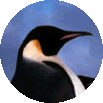
Penguin Powered
|
|
|
|
A joint
project between NASA/JSC & the NM Bureau of Geology
|
|
|
|
Field Methods
 |
|
Patricia
Dickerson measuring gravity in Taos to 1 part in 100,000,000 (the Worden
gravimeter can theoretically resolve 0.01 mGal differences in acceleration
--equivalent to one inch of elevation change).
|
During March 14-20, 1999 Bauer, Johnson, Dickerson, and Muehlberger met in
Taos to run a series of practice geophysical (gravity
and seismic) surveys designed to evaluate the techniques and equipment needed
to run the Astronaut candidate exercises. Tony Lupo (NM Tech geophysics graduate
student--now at Phillips Petroleum) and Dr.
Harold Tobin (NM Tech Associate Professor of Geophysics) provided technical
expertise and field geophysical equipment during the practice run. Other participants
were Adam Read, Mic Heynekamp,
Bill White, and Paul
Drakos. Based on the practice surveys, we decided on the following procedure
for each of the four groups of Astronaut candidates:
- Define a suitable survey line in advance of
the arrival of each Astronaut candidate group.
- Produce GIS base maps and aerial photos for
each survey line.
- The morning of the survey, the Astronaut candidates
are briefed on the local geology, the chosen gravity method (theory and
application), and logistics.
- Drive to survey location, and distribute orange vests and field gear.
- Break the group into two teams for the exercise, each consisting of a pair
of surveyors and gravimeter teams.
- Provide brief instruction in field surveying
(topo maps, air photos, GPS receivers) and gravity-measuring techniques.
- From a central base station on the survey line, send teams out along opposite
traverses. Survey teams plant flags at 100m
spacing using laser rangefinders, and record locations using topographic base
maps, air photos, and GPs units. The Gravity team
follows behind, recording gravity meter reading and time at each flag. Halfway
through the exercise, survey and gravity teams switch tasks.
- Teams radio data to "Mars Base" (pickup
truck at the base station) where they are entered into a spreadsheet on a
laptop computer.
- Geophysicists process the gravity data that evening.
- At the morning breakfast meeting, each group views the profile that they
acquired, participates in its interpretation, views its incorporation onto
the geologic map, and helps select the location for the next traverse
based on their findings
